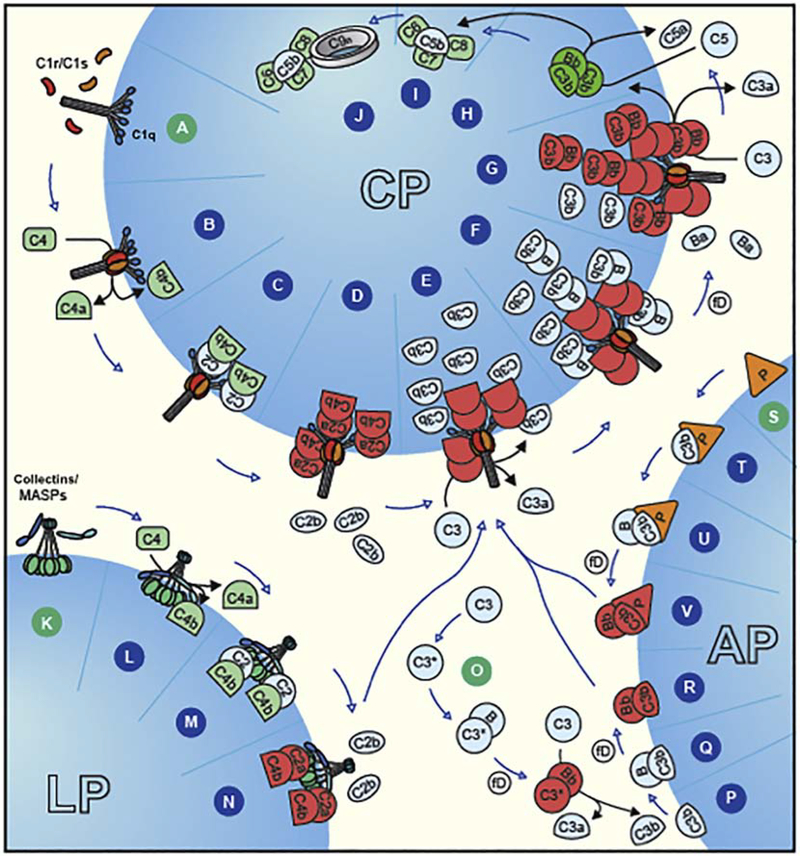Figure 1.
Complement activation pathways. Steps A–E shows C1q-mediated classical pathway (CP) activation and formation of the C3 convertase (C4b2a) formation. Steps F & G depict merging with amplification route of the alternative pathway (AP) for more C3b deposition (opsonization) through C3bBb assembly (AP C3 convertase), and eventual formation of AP C5 convertase formation (C3bBb3b). Classical pathway activation can directly form a C5 convertase (C4b2a3b) as well. Steps H–J represent the terminal pathway of the complement system, regardless of initiation pathway, showing formation of the lytic complex C5b-9. Lectin pathway (LP) is triggered through binding of collectins/MASPs (K) to the particle surface, leading to the formation of C3 convertase (steps L–N). The scheme also shows AP tick-over, initiated by meta-stable C3(H2O) in the fluid phase (step O) eventually leading to the formation of AP C3 convertase (C3bBb) (steps P–R), and its stabilization on binding to properdin (triangle P) (step V). Steps S–U represent a proposed artificial situation, where properdin may act as a pattern-recognition molecule, and on binding may recruit C3b, and form AP C3 convertase (step V). Image credit: Peter Popp Wibroe.

